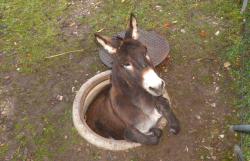In a recent post on this forum, Angela Landgraf shared a digest of the long and winding road having led to the publication of Seismicity, Fault Rupture and Earthquake Hazards in Slowly Deforming Regions. Reading this post in the midst of wrapping up the edition of our Minoan Earthquakes volume, I could only sympathize with her concerns and hopes for the future of edited books at a time when impact factors and other author-level metrics all too often dictate academic choices.
Four years and a half (!) after the Out of Rubble Leuven workshop (29-30 November 2012), we are proud to announce the publication of Minoan Earthquakes: Breaking the Myth through Interdisciplinarity at Leuven University Press. Reasons for such delay are manifold but chief among them is our editorial choice of producing a coherent volume that might be used as an up-to-date toolbox for readers interested in the broader field of archaeoseismology – not just Minoan archaeoseismology – and its (necessary) relationship to other, better established, disciplines. This choice is reflected by the structure of the book and breadth of topics covered by its authors, ranging from seismology, paleoseismology, geophysics, architecture, engineering and, of course, Minoan archaeology. Although we will ultimately leave readers to judge how successful we were in this endeavor, we are encouraged by Iain Stewart’s appreciation of the volume:
The impressive breadth and depth of this volume is testimony to how far the field has progressed in the past two decades. This volume deserves to be read widely by earthquake scientists and archaeologists, for the significance of its messages extends far beyond the Minoan arena.
We would like to take the opportunity of this post to thank again our panel of authors and reviewers for their trust, patience, and hard work – this project would never have been completed without their expertise and dedication. We are also grateful to the editorial team at Leuven University Press for skillfully shepherding this book to publication. Although we would have liked to see this volume appear much earlier, we believe (hope) the result was worth the wait.
The book can be purchased directly from Leuven University Press.
Table of contents:
List of key abbreviations and definitions
Chronological table
Part 1: Introduction and theoretical background
Chapter 1
‘In bulls doth the Earth-Shaker delight’ – Introduction to the volume (Jan Driessen)
Chapter 2
Seismological issues of concern for archaeoseismology (Susan E. Hough)
Chapter 3
Palaeoseismology (James P. McCalpin)
Chapter 4
Archaeoseismology (Manuel Sintubin)
Chapter 5
Non-invasive techniques in archaeoseismology (Christoph Grützner & Thomas Wiatr)
Part 2: Geological and seismotectonic context
Chapter 6
The geological setting of Crete: an overview (Charalampos Fassoulas)
Chapter 7
Earthquake sources and seismotectonics in the area of Crete (Gerassimos A. Papadopoulos)
Chapter 8
The palaeoseismological study of capable faults on Crete (Jack Mason & Klaus Reicherter)
Part 3: Minoan archaeoseismology
Chapter 9
Archaeoseismological research on Minoan Crete: past and present (Simon Jusseret)
Chapter 10
An architectural style of openness and mutability as stimulus for the development of an earthquake-resistant building technology at Akrotiri, Thera, and Minoan Crete (Clairy Palyvou)
Chapter 11
Minoan structural systems: earthquake-resistant characteristics. The role of timber (Eleftheria Tsakanika)
Part 4: Case studies
Chapter 12
Evidence for three earthquakes at Mochlos in the Neopalatial period, c. 1700-1430 BC (Jeffrey S. Soles, Floyd W. McCoy & Rhonda Suka)
Chapter 13
Punctuation in palatial prehistory: earthquakes as the stratigraphical markers of the 18th-15th centuries BC in central Crete (Colin F. Macdonald)
Chapter 14
Man the measure: earthquakes as depositional agents in Minoan Crete (Tim Cunningham)
Part 5: Critical appraisal and conclusion
Chapter 15
Earthquakes and Minoan Crete: breaking the myth through interdisciplinarity (Simon Jusseret & Manuel Sintubin)
About the authors
About the editors
Index



No Comments
No comments yet.